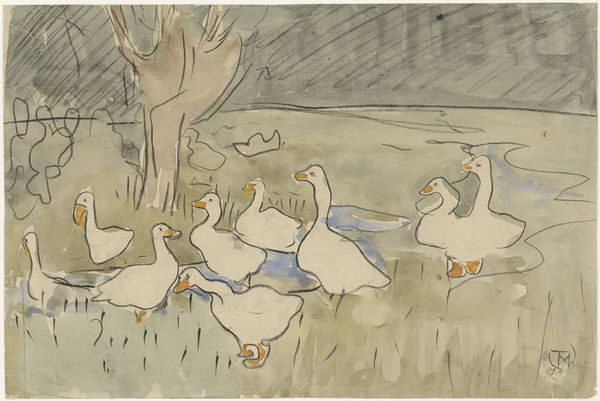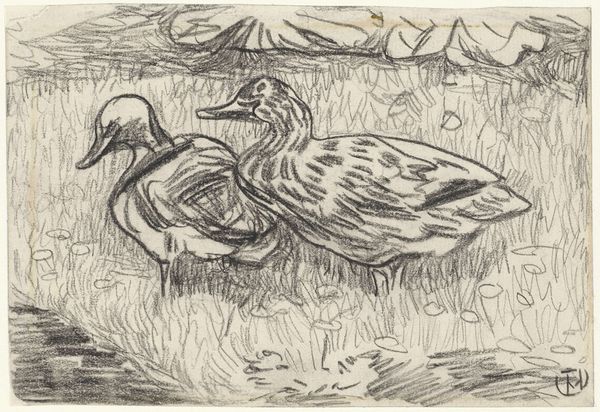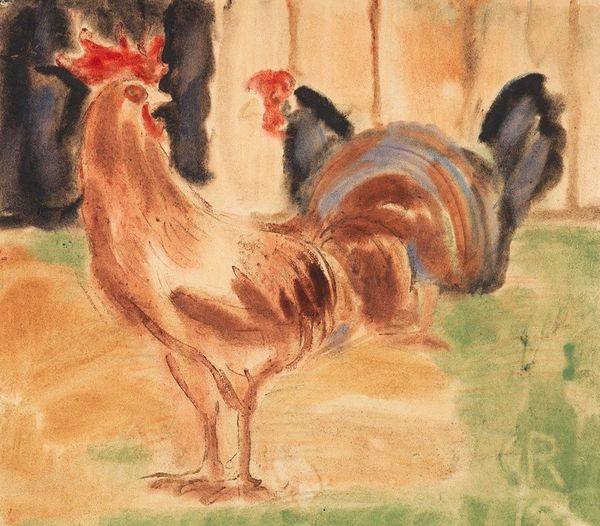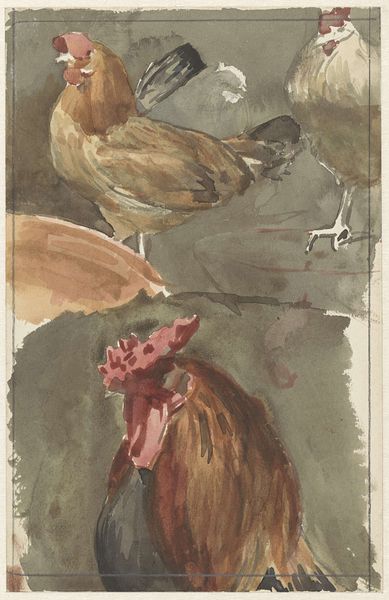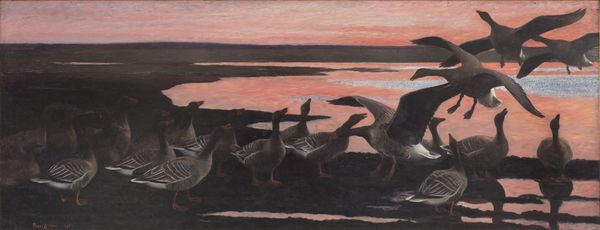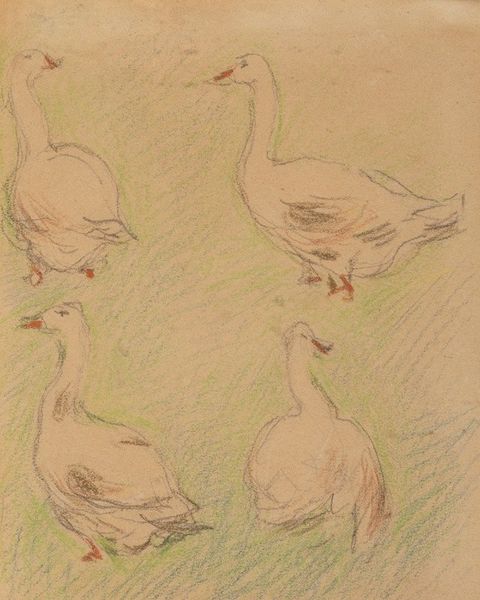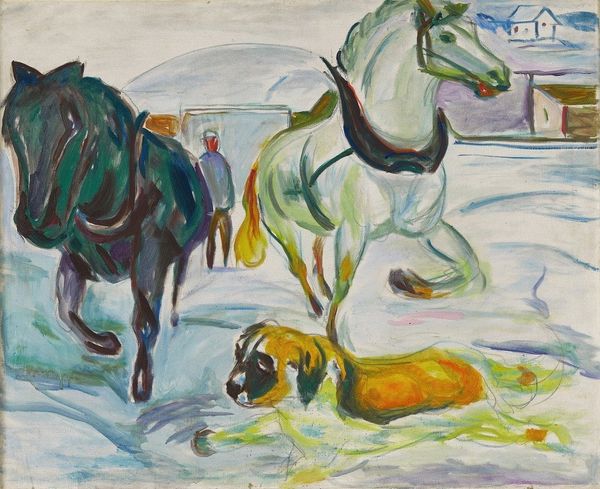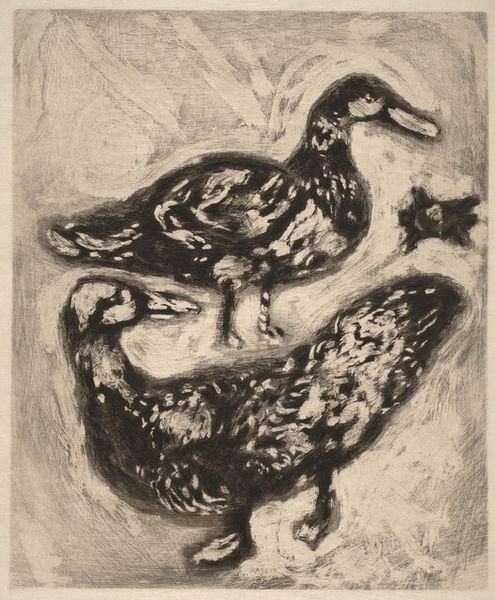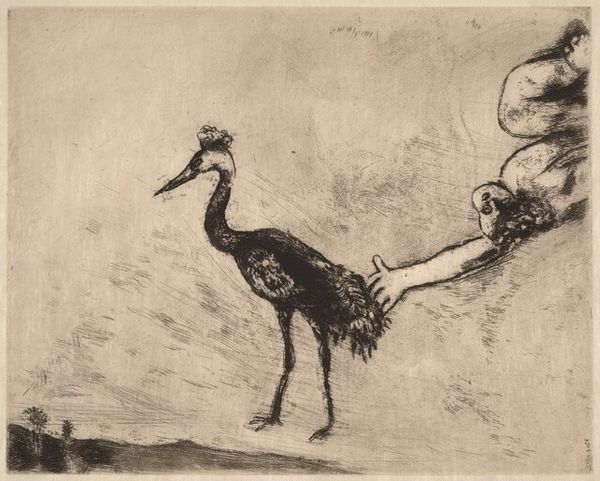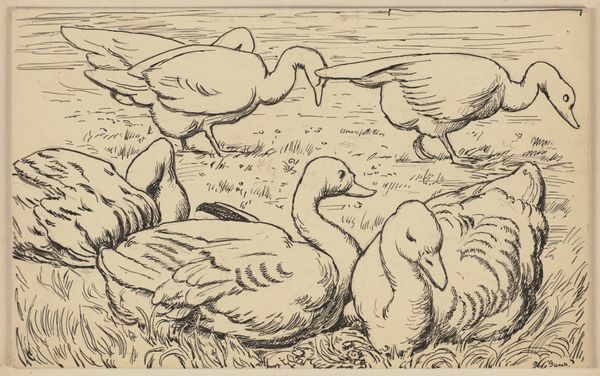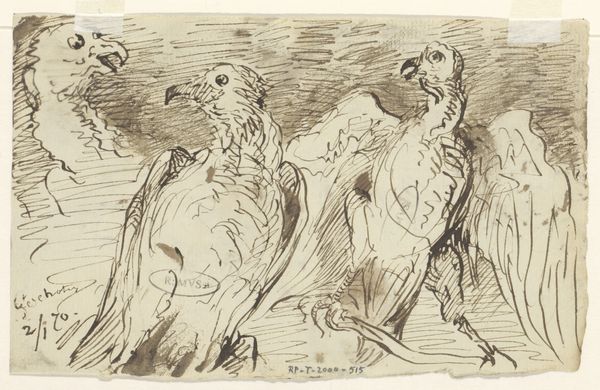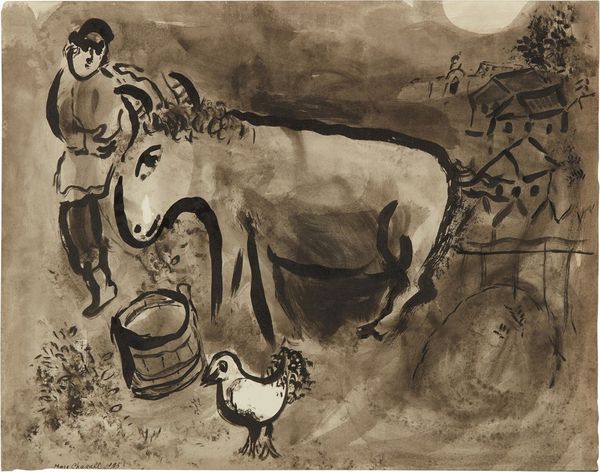
painting, watercolor
#
painting
#
impressionism
#
landscape
#
figuration
#
watercolor
Copyright: David Burliuk,Fair Use
Editor: We’re looking at David Burliuk’s watercolor painting, "Red Cockerel." It feels like an unfinished memory, quickly captured. What stands out to you about it? Curator: What I see is Burliuk engaging with the established tradition of landscape painting while simultaneously disrupting it. Consider the political climate during his time. Early 20th-century Russia was on the cusp of massive upheaval, and artists were questioning traditional forms of representation. Does this loose, almost child-like depiction of rural life serve as a commentary on the idealized images promoted by the establishment? Editor: That's interesting. I hadn't thought about it in terms of political commentary. It just seemed like a charming, if simple, farm scene. Curator: Consider how accessible this watercolor likely was to a wider audience, compared to oil paintings shown in formal galleries. The very act of creating and circulating this image, however naive it might seem at first glance, represents a democratization of art. Do you see it that way, too? Editor: I do now. I see how it could be seen as accessible and challenging elitist art spaces. Curator: The animals too…Roosters often symbolize vigilance and even aggression. Are these qualities also tied to a social position in the country? The symbolism here is worth further investigation in connection to the political changes. Editor: I'm really fascinated by this point of view. Now the painting is not only pretty; it also means something else! Curator: Exactly! Art is a response and an active ingredient in the context in which it exists, not only decorative. Thank you for walking through this exercise with me. Editor: It helps when one stops just "seeing" and starts critically viewing with a little guidance!
Comments
No comments
Be the first to comment and join the conversation on the ultimate creative platform.
